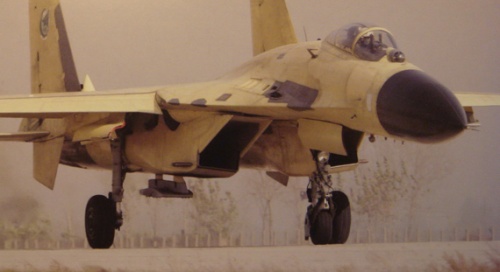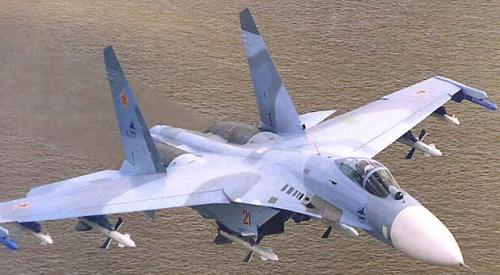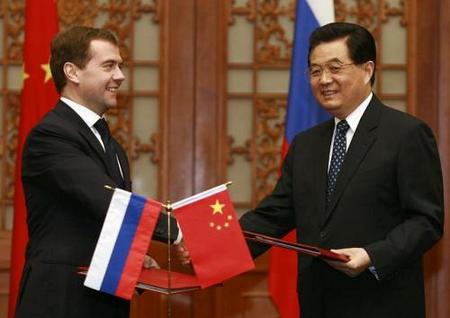China and America are bound to be rivals, but they do not have to be antagonists, Is that really the case? In many ways China has made efforts to try to reassure an anxious world. Leaving politics aside, the rise of chinese millitary power is obvious to all, not only millitary, china is making its way in Civil aviation market as well. But what is interesting in all is, a “Cloning Factor”. After decades of importing and reverse-engineering Russian arms, China has reached a tipping point: It now can produce many of its own advanced weapons—including high-tech fighter jets like the Su-27—and is on the verge of building an aircraft carrier. Not only have Chinese engineers cloned the prized Su-27’s avionics and radar but they are fitting it with the last piece in the technological puzzle, a Chinese jet engine.
At Zhuhai 2010 one thing was clear: China is starting to export much of this weaponry, undercutting Russia in the developing world, and potentially altering the military balance in several of the world’s flash points. China, here laid on its biggest commercial display of military technology—almost all based on Russian know-how. The star guests were the “Sherdils,” a Pakistani aerobatic team flying fighter jets that are Russian in origin but are now being produced by Pakistan and China. Russia’s predicament mirrors that of many foreign companies as China starts to compete in global markets with advanced trains, power-generating equipment and other civilian products based on technology obtained from the West. This is not all, there is an additional security dimension, however: China is developing weapons systems, including aircraft carriers and carrier-based fighters, that could threaten Taiwan and test U.S. control of the Western Pacific. According to West, Chinese exports of fighters and other advanced weapons also “threaten” to alter the military balance in South Asia, Sudan and Iran. But if I am sitting in Iran or Pakistan, the story is otherway round. Interestingly China accounted for 2% of global arms transfers between 2005-2009, putting it in ninth place among exporters, according to the Stockholm International Peace Research Institute (SIPRI). But no other Asian country has sought to project military power—and had the indigenous capability to do so—since Japan’s defeat in 1945.
As the Chinese leaders’ history lesson will have told them, the relationship that determines whether the world is at peace or at war is that between pairs of great powers. Sometimes, as with Britain and America, it goes well. Sometimes, as between Britain and Germany, it does not. There are also implications for U.S. weapons programs. Last year the Pentagon decided to cut funding for the F-22—currently the most advanced fighter deployed in the world—partly on the grounds that China wouldn’t have many similar aircraft for at least 15 years. But then Gen. He Weirong, deputy head of China’s Air Force, announced that Chinese versions of such jets were about to undergo test flights, and would be deployed in “eight or 10 years.” The Defense Intelligence Agency now says it will take China “about 10 years” to deploy stealth fighters in “meaningful numbers.”

J-11: many aviation experts believe AVIC is having problems developing an indigenous engine for the J-11B with the same thrust and durability as the original Russian ones.
Few things illustrate this more clearly than the J-11B (shown below), a Chinese fighter that Russian officials allege is a direct copy of the Su-27, a one-seat fighter that was developed by the Soviets through the 1970s and 1980s as a match for the U.S. F-15 and F-16. Before the early 1990s, Moscow hadn’t provided major arms to Beijing since an ideological split in 1956, which led to a brief border clash in 1969. In 1992 (after collapse of Soviet Union), China became the first country outside the former Soviet Union to buy the Su-27, paying $1 billion for 24. Beijing’s breakthrough came in 1996, when it paid Russia $2.5 billion for a license to assemble another 200 Su-27s at the Shenyang Aircraft Company. The agreement stipulated that the aircraft—to be called the J-11—would include imported Russian avionics, radars and engines and couldn’t be exported. The J-11B looked almost identical to the Su-27, but China said it was 90% indigenous and included more advanced Chinese avionics and radars. Only the engine was still Russian, China said.

Sukhoi 27: The J-11B looked almost identical to the Su-27, but China said it was 90% indigenous and included more advanced Chinese avionics and radars. Only the engine was still Russian
The J-11B presented Russia with a stark choice—to continue selling China weapons, and risk having them cloned, too, or to stop, and miss out on its still lucrative market.many aviation experts believe AVIC is having problems developing an indigenous engine for the J-11B with the same thrust and durability as the original Russian ones. Photographs published recently on Chinese military websites appear to show engines fitted on the J-11B and a modified version—called the J-15—for use on aircraft carriers. The birth of J-15 can be read on my previous post Here Its not just Su-27 that concerns Russians, but also Su-33, a more advanced version of Su-27. The J-11B is expected to be used by the Chinese navy as its frontline fighter, capable of sustained combat over the entire East China Sea and South China Sea. Aircraft carriers and J-15 fighters would further enhance its ability to stop the U.S. intervening in a conflict over Taiwan, and test its control of the Western Pacific. China’s arms exports could have repercussions on regions in conflict around the world. Pakistan inducted its first squadron of Chinese-made fighter jets in February, potentially altering the military balance with India.The potential customer of greatest concern to the U.S. for JF-17 sale, is Iran, which purchased about $260 million of weapons from China between 2002-2009, according to Russia’s Centre for Analysis of the Global Arms Trade. Economist cites, that China and America have one advantage over history’s great-power pairings: they saw the 20th century go disastrously wrong. It is up to them to ensure that the 21st is different.
Detail about china’s rise and Russian arm deal, can be read on this extensive report published in Wall Street Journal, HERE







